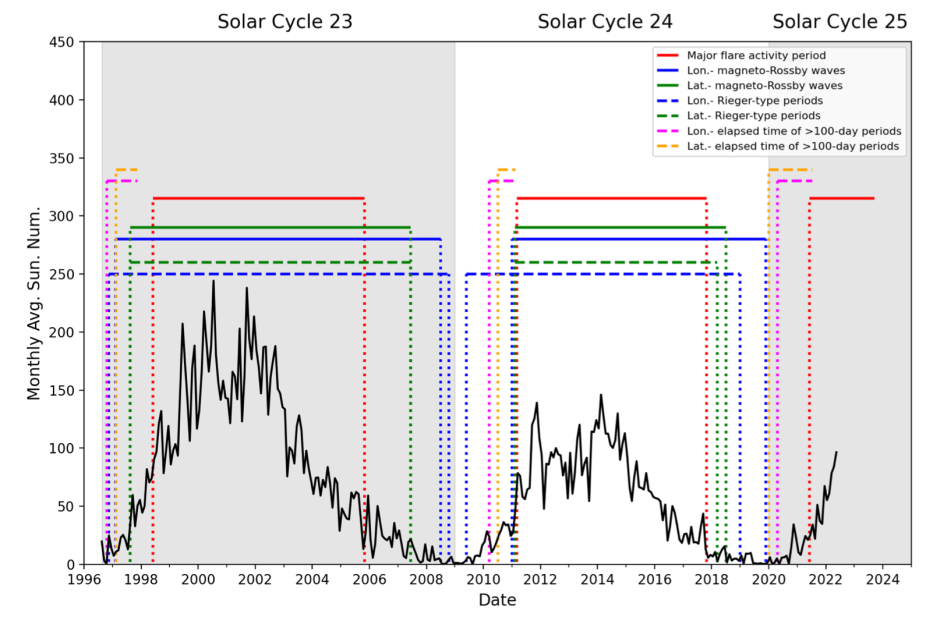
The black curve is the monthly mean total sunspot number from the beginning of SC23 until 2022 May. The red vertical line represents the major flare activity period of SC23, SC24, and SC25. The blue/green vertical line refers to the identified periods of the magneto-Rossby waves in the longitudinal/latitudinal movement of the global magnetic field during SC23-24. The blue/green vertical dashed line refers to identified periods of Rieger-type in the longitudinal/latitudinal movement of the global magnetic field during SC23-24. The short magenta/orange vertical dashed line refers to the elapsed time of the >100-day period in the longitudinal/latitudinal movement before the first X-class flare occurred in each solar cycle.
Astrophysical Journal: Global solar activity variation mainly occurs over about an 11-year cycle. However, both longer and shorter periodicities than the solar cycle are also present in many different solar activity indices. The longer timescales may be up to hundreds of years, while the shorter timescales for global solar variability could be within 0.5 - 2 years, which include e.g. from the Rieger-type periods (150–160 days) to QBOs (quasi-biennial oscillations) of 2 years. The most likely origin of this short-timescale quasi-periodicity is attributed to magnetic Rossby waves, which have periods of 0.8—2.4 years. In this work, we present findings of a unique evolution of identified shorter periodicities, like the Rieger-type, arising from magnetic Rossby waves, throughout the Solar Cycles 19-25. We report further observational evidence of the strong relationship between the Rieger-type periodicity, magneto-Rossby waves, and major solar flare activity. Moreover, this study also reveals that the global solar magnetic field has a continuous periodic longitudinal conveyor belt motion along the solar equator together with an up-and-down movement in the latitudinal directions. We found that when these longitudinal and latitudinal movements have Rieger-type periodicity and magneto-Rossby waves during the same period of a solar cycle then major flare activity is present.